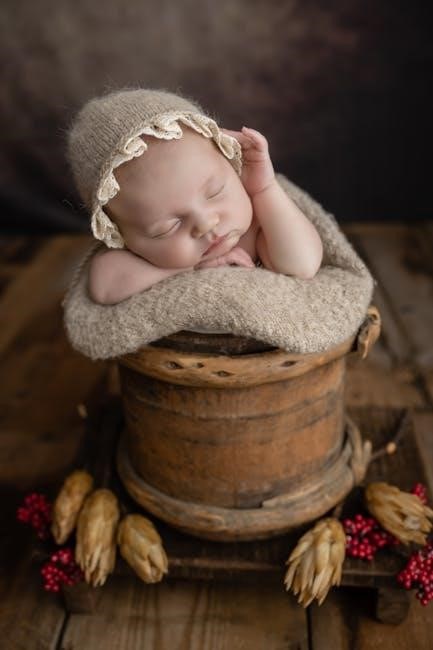How to Measure Your Head for a Bucket Hat

To measure your head, use a soft tape measure or string. Wrap it around your head just above your ears and forehead for an accurate circumference measurement.
Using a Tape Measure
To measure your head using a tape measure, wrap it snugly around the widest part of your head, just above your ears and eyebrows. Ensure the tape is level and not too tight. This will give you the circumference needed to determine your bucket hat size. Take note of the measurement and round up to the nearest size for the best fit. This method ensures accuracy and comfort when selecting the right bucket hat size.

Alternative Methods (String or Existing Hat)
If you don’t have a tape measure, use a string or a flexible object. Wrap it around your head, mark where it overlaps, and measure the length with a ruler. Alternatively, use an existing hat that fits well. Measure its interior circumference, typically just above the ears, to determine your size. Both methods provide an accurate head circumference, helping you choose the right bucket hat size without a tape measure.

Understanding Hat Size Charts
Hat size charts use standard labels like S, M, L, and XL to categorize sizes based on head circumference measurements. These charts help match your measurement to the ideal fit for a bucket hat, ensuring comfort and style.
Standard Size Labels (S, M, L, XL)
Standard size labels (S, M, L, XL) for bucket hats are based on head circumference measurements. Small fits 55-58 cm, Medium 58.5-60.5 cm, Large 61-63 cm, and XL 63.5 cm and above. These labels provide a universal sizing guide, making it easier to choose the right fit. Always refer to the brand’s specific size chart, as slight variations may occur. Accurate measurements ensure comfort and proper fit, avoiding hats that are too tight or loose.
Age-Specific Sizing (Adults vs. Kids)
Bucket hats are sized differently for adults and kids. Adults typically range from Small/Medium to Extra Large, based on head circumference. Kids’ sizes include XS, S, M, and L, catering to smaller head sizes. Age-specific sizing ensures a comfortable fit, with kids’ hats designed for growing heads and adults’ hats offering a more standardized measurement range. Always check the size chart for accurate fitting, as sizes may vary slightly between brands.

Bucket Hat Size Chart
Bucket hat sizes vary by age and head circumference. Adults range from S/M to XL, while kids’ sizes include XS to L, ensuring a perfect fit for all. Use the chart to match your measurement with the ideal size for comfort and style.
Adult Size Chart (Head Circumference)
Adult bucket hat sizes are based on head circumference measurements. Small/Medium fits 57.5 cm, Medium/Large fits 60.5 cm, and Extra-Large fits 62.5 cm. These sizes ensure a comfortable fit for most adults. To find your size, measure your head circumference just above your eyebrows and ears, then match it to the closest size. Keep in mind that sizes may vary slightly by brand, so always refer to the specific brand’s chart for accuracy. Choosing the correct size ensures optimal comfort and style.
Kids Size Chart (Head Circumference)
Kids’ bucket hat sizes are categorized by head circumference. Extra-Small fits 45 cm, Small fits 48 cm, Medium fits 52 cm, and Large fits 55 cm. These sizes are designed to accommodate growing heads comfortably. Measure your child’s head just above the eyebrows and ears, then compare to the chart. Sizes are general guidelines and may vary by brand, so always check the specific size chart for the most accurate fit for your child’s head circumference.
Factors Affecting Fit
Head circumference, brim width, and crown depth impact how a bucket hat fits. Material stretch and comfort also influence the overall fit and wearability of the hat.
Brim Width and Crown Depth
Brim width and crown depth significantly impact the fit and style of a bucket hat. A wider brim offers more shade but may overwhelm smaller faces, while a narrower brim suits delicate features. Crown depth determines how low the hat sits, with deeper crowns providing more coverage. These measurements ensure the hat balances with your head size and face shape, creating a flattering and comfortable fit. Proper proportions are key to both functionality and aesthetic appeal.
Material Stretch and Comfort
Material stretch and comfort play a crucial role in the fit of a bucket hat. Hats made from cotton or polyester may offer natural stretch, ensuring a snug yet comfortable fit. Wool hats provide warmth but may lack elasticity. Consider the season and your activity level when choosing materials. A breathable fabric like cotton is ideal for summer, while wool suits colder climates. The right material ensures long-lasting comfort and a proper fit, enhancing your overall experience with the bucket hat.
How to Choose the Right Size
Match your head circumference to the size chart, ensuring comfort and fit. Consider brand-specific sizing guides, as measurements may vary slightly between manufacturers for the best result.
Interpreting Measurements
Once you’ve measured your head circumference, compare it to the size chart to determine your ideal bucket hat size. Ensure the measurement aligns with the chart’s range for the best fit. If your measurement falls between sizes, round up to the next size for comfort. Always refer to the brand’s specific sizing guide, as standards may vary slightly. Consider the material’s stretch and your personal comfort preference to make an informed decision for the perfect fit.
Using Brand-Specific Charts
Always consult the brand’s specific size chart for accurate fitting, as sizing may vary between manufacturers. Compare your head circumference to their chart, ensuring alignment with the provided measurements. Some brands offer additional details like brim width or crown depth; Using brand-specific charts ensures the best fit, as they account for unique design elements. This step is crucial for avoiding size discrepancies and guaranteeing comfort and style tailored to the brand’s design specifications.

Ensuring Accuracy
Double-check your measurements by trying the hat on or comparing it to a well-fitting hat. Use a mirror to ensure proper placement and evenness for the best fit.
Trying the Hat On
Trying the hat on ensures the best fit. Place it evenly on your head, just above your eyebrows, and check the comfort. The hat should feel snug but not tight, staying secure in windy conditions. If it leaves a mark, it’s too tight. For materials like straw or fabric, some stretch may occur over time. Compare the fit to a hat you already own for consistency. This step ensures accuracy and comfort, crucial for a perfect bucket hat fit.
Using an Existing Hat as Reference
If you already own a bucket hat that fits well, use it as a reference. Check the size label or compare its measurements to the size chart. This method saves time and ensures accuracy, as it mirrors your personal fit preferences. Measure the hat’s circumference or compare it directly to the size guide to determine your ideal size. This approach is especially helpful if you’re unsure about measuring yourself or prefer a tried-and-true fit.

Common Mistakes to Avoid
Not Measuring Properly: Skipping the measurement step often leads to poor fit. Always use a tape measure or string for accurate sizing.
Ignoring Material Differences: Failing to consider fabric stretch or rigidity can result in discomfort. Choose sizes based on the specific material of the hat.
Not Measuring Properly
One of the most common mistakes is not measuring your head circumference accurately. Use a soft tape measure or string to wrap around your head just above your ears and forehead. Ensure the tape is snug but not too tight, as this can lead to discomfort. Avoid guessing your size, as it often results in poor fit. Measure carefully to avoid a hat that is too tight or too loose, ensuring a comfortable and secure wear. Always double-check your measurements for accuracy.
Ignoring Material Differences
Ignoring material differences can lead to discomfort and improper fit. Hats made from stretchy fabrics, like cotton or elastic blends, may fit differently than rigid materials like straw. Always consider the fabric type when choosing your size, as some materials may shrink or stretch over time. Check the size chart specific to the material of your bucket hat to ensure a comfortable and secure fit. Neglecting this can result in a hat that feels too tight or too loose, ruining the overall wearing experience.

Special Considerations
Consider gender-specific fits and seasonal materials. Men’s, women’s, and kids’ hats differ in design and sizing. Winter hats may include thicker fabrics, while summer hats use breathable materials.
Men’s vs. Women’s vs. Kids’ Fits
Men’s bucket hats typically fit larger head circumferences, while women’s hats are slightly smaller. Kids’ hats vary by age, with smaller sizes for younger children. Men’s hats often feature structured brims, while women’s may have softer, more delicate designs. Kids’ hats prioritize comfort and adjustability. Material choices also differ, with men’s hats using sturdier fabrics and women’s opting for lighter, stylish materials. Ensure accurate sizing by referring to brand-specific charts tailored to each group.
Seasonal Hats (Winter vs. Summer)

Winter bucket hats are made from thicker, insulating materials like wool or fleece, offering warmth and protection from cold weather. Summer hats, in contrast, use lightweight, breathable fabrics such as cotton or canvas to keep cool. Winter styles often feature wider brims for added coverage, while summer hats may prioritize ventilation for comfort. Both seasons emphasize a snug, comfortable fit, ensuring functionality and style regardless of the weather.
Measuring your head and understanding size charts ensures the perfect fit for your bucket hat. Consider material, brim width, and seasonal needs for optimal comfort and style. Whether for winter warmth or summer breeze, the right size guarantees a confident, flattering look. Use this guide to make informed choices and enjoy your bucket hat with comfort and confidence, knowing it suits your unique needs and preferences.
